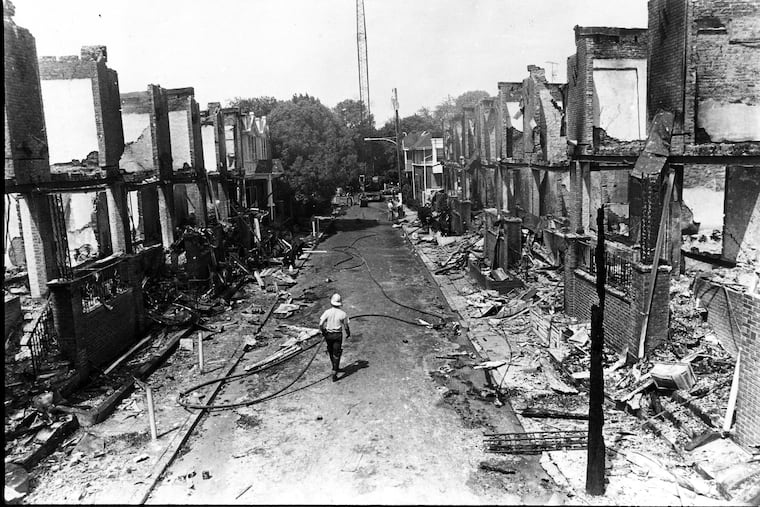Philadelphia reflects on the lessons of the MOVE bombing 40 years later, still grappling with its historical implications and community impacts.
The MOVE bombing of May 13, 1985, remains a significant and haunting chapter in Philadelphia’s history, symbolizing a broader spectrum of systemic issues within the city that have persisted over the decades. This tragic event, in which city officials bungled a confrontation with the radical group MOVE, resulted in the deaths of 11 individuals, including five children, and the destruction of 61 homes in a predominantly Black neighborhood. The repercussions of the bombing continue to reverberate through the community and the city at large, raising critical questions about race, poverty, police brutality, and government accountability.
The actions leading up to, during, and following the MOVE confrontation spotlight a myriad of systemic ills that plague Philadelphia. Despite notable progress in various areas since the incident, the pace of change has been sluggish and insufficient for many residents. The city remains the poorest large city in the United States, a stark reality that reflects ongoing socioeconomic disparities. Moreover, the aftermath of the MOVE bombing is emblematic of a larger pattern of neglect towards marginalized communities, where city leadership sometimes appears complacent in the face of urgent issues such as homelessness, failing public schools, and systemic racism.
The MOVE group’s origins can be traced back to 1972 when founder Vincent Leaphart, later known as John Africa, established a back-to-nature movement that vehemently opposed governmental authority and capitalism while promoting animal rights and sustainable living. The group’s confrontational style, marked by loud rhetoric against societal injustices, created tension with neighbors and local authorities, setting the stage for conflict. Attempts at de-escalation by the city ultimately failed, culminating in a disastrous police operation and a 12-hour standoff that ended with the aerial bombing of MOVE’s fortified headquarters.
Historically, the MOVE incident exemplifies not only police misconduct but also the pitfalls of a government unprepared for conflict resolution. In the wake of the bombing, City Hall’s leadership—including then-Mayor W. Wilson Goode—faced scrutiny over a lack of accountability, with no officials held responsible for the resultant casualties or the extensive property damage.
City officials have since publicly acknowledged the tragedy, with Philadelphia’s City Council passing a resolution in 2020 offering a formal apology for the bombing. However, lingering inequities still pervade the city, highlighting the need for a thorough reassessment of policies that perpetuate racial segregation and socioeconomic divide. As systemic racism continues to persist within various public institutions, including education and law enforcement, the consequences of historical neglect remain palpable.
Despite efforts from current leadership—like Mayor Cherelle L. Parker’s plans to revitalize neighborhoods and improve public services—the road to meaningful change is fraught with hurdles. With critical issues surrounding crime, education, and economic inequality persisting, Philadelphia’s trajectory remains unclear. As the city approaches the 50th anniversary of the MOVE bombing, the question lingers: has the past truly shaped a transformative present, or are the city’s unresolved issues destined to reiterate history? Ultimately, the MOVE bombing serves as a haunting reminder of the need for systemic change and civic accountability in Philadelphia.







